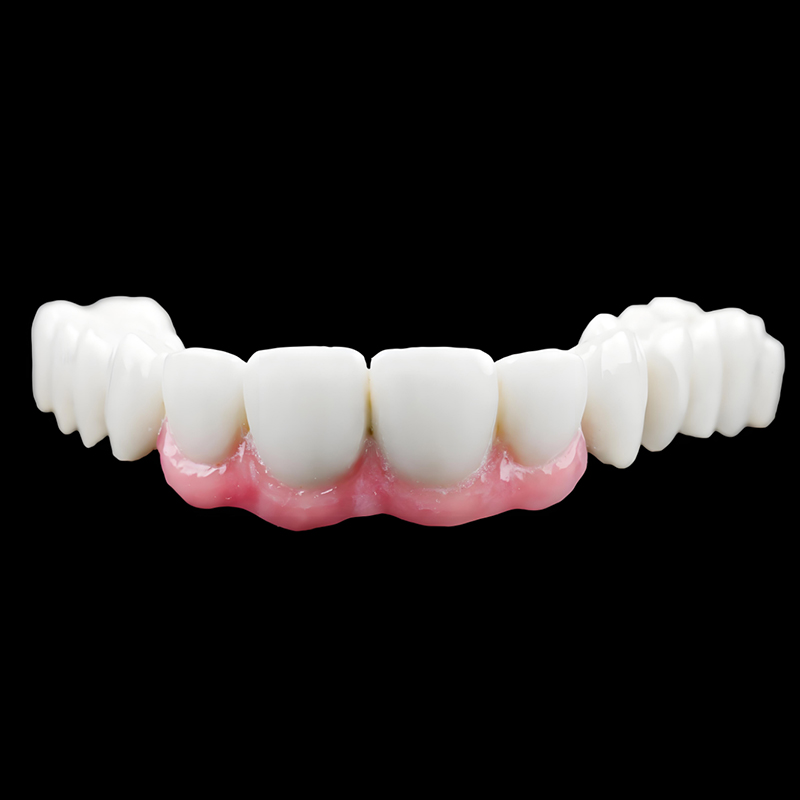
Molecular Mechanisms Governing Impact Toughness in Dental PMMA
The impact toughness of poly(methyl methacrylate) (PMMA) in dental applications stems from its molecular architecture and energy dissipation mechanisms. At the molecular level, PMMA chains consist of rigid methyl methacrylate (MMA) units with limited rotational freedom, contributing to its inherent brittleness. However, modifications to the polymer backbone can alter this behavior. For instance, copolymerization with acrylic esters like butyl acrylate (BA) introduces flexible side chains that act as internal plasticizers, reducing glass transition temperature (Tg) by 5–10°C and enhancing chain mobility. This results in a 20–30% improvement in impact strength, as flexible segments absorb energy through localized deformation before crack propagation.
Another critical factor is the presence of residual monomer after polymerization. Studies show that PMMA with residual monomer content below 2% exhibits higher impact toughness due to reduced porosity and improved chain entanglement. Advanced curing techniques, such as microwave-assisted polymerization, achieve lower monomer levels (0.5–1.0%) compared to traditional water-bath curing (1.5–2.5%), thereby enhancing toughness by minimizing void formation.
Enhancement Strategies Through Fiber Reinforcement
Fiber incorporation is a well-established method to improve PMMA’s impact resistance. Glass fibers, with their high tensile strength (2–4 GPa) and modulus (70–80 GPa), are particularly effective. When placed near the surface of denture bases, glass fibers increase flexural strength by 40–60% and impact toughness by 30–50%. This is attributed to stress transfer from the brittle PMMA matrix to the fibers, which absorb energy through fiber pull-out and debonding.
The orientation of fibers also plays a pivotal role. Unidirectional fibers aligned parallel to the direction of impact forces demonstrate superior performance compared to randomly oriented fibers. For example, denture bases reinforced with 10–15% (by volume) unidirectional glass fibers show a 2.5-fold increase in impact strength compared to unmodified PMMA.
Surface treatment of fibers further enhances adhesion. Silane coupling agents, such as 3-(trimethoxysilyl)propyl methacrylate (TMSPM), create covalent bonds between the fibers and PMMA matrix, improving interfacial shear strength by 50–70%. This reduces the likelihood of fiber-matrix debonding under impact loads, thereby preserving the material’s toughness.
Role of Nanofillers in Improving Impact Resistance
Nanofillers offer a promising avenue for enhancing PMMA’s impact toughness without compromising its aesthetic or processing properties. Titanium dioxide (TiO₂) nanoparticles, with diameters of 20–50 nm, are widely studied for their ability to increase hardness and reduce water absorption. When incorporated at 1% (by mass), TiO₂ nanoparticles raise the flexural strength of PMMA by 15–20% and impact toughness by 10–15%. This is attributed to the nanoparticles’ ability to impede crack propagation by inducing microcracking and crack deflection.
Zirconia (ZrO₂) nanoparticles exhibit even greater potential. At a loading of 0.5–1.0%, ZrO₂ increases the impact strength of PMMA by 25–35% while simultaneously improving fracture toughness by 20–30%. The phase transformation of ZrO₂ from tetragonal to monoclinic under stress induces compressive forces at the crack tip, effectively arresting crack growth.
Recent advancements in nanofiber technology have also shown promise. Electrospun polyvinyl pyrrolidone (PVP)/ZrO₂ composite nanofibers, when embedded in PMMA, increase bending strength by 83% and bending toughness by 169%. The high aspect ratio of nanofibers (100–500:1) provides a large surface area for stress transfer, while the ZrO₂ particles reinforce the nanofiber-matrix interface.
Impact of Processing Techniques on Toughness
The manufacturing process significantly influences PMMA’s impact toughness. Traditional water-bath curing, while widely used, often results in residual stresses due to non-uniform heating. This can lead to microcracking and reduced toughness. In contrast, microwave-assisted curing achieves uniform heating, reducing residual stresses and improving impact strength by 10–15%.
High-pressure polymerization techniques, such as autoclave curing at 2–3 MPa, further enhance toughness by reducing porosity and increasing chain entanglement. Studies show that autoclave-cured PMMA exhibits a 20–25% higher impact strength compared to conventionally cured samples.
Post-curing treatments, such as annealing at 80°C for 4 hours, relieve internal stresses and improve dimensional stability. This results in a 15–20% increase in impact toughness, as the material becomes more resistant to crack initiation and propagation.
Challenges and Future Directions
Despite significant advancements, challenges remain in optimizing PMMA’s impact toughness. One issue is the trade-off between toughness and stiffness. While fiber reinforcement improves toughness, it often reduces the material’s modulus, potentially compromising its ability to withstand occlusal forces. Balancing these properties requires careful optimization of filler content and orientation.
Another challenge is the long-term stability of nanofillers. Agglomeration of nanoparticles over time can reduce their effectiveness in enhancing toughness. Surface modification techniques, such as grafting polymers onto nanoparticle surfaces, can improve dispersion and prevent agglomeration, thereby maintaining the material’s performance over time.
Future research is also focused on developing bioactive fillers that not only improve mechanical properties but also promote osseointegration. For example, incorporating hydroxyapatite nanoparticles into PMMA could enhance both impact toughness and bone-bonding ability, making it suitable for implant-supported prostheses.
Additionally, computational modeling techniques, such as finite element analysis (FEA), are being used to predict the impact behavior of modified PMMA composites. This allows for rapid screening of material combinations and processing parameters, accelerating the development of high-performance dental materials.